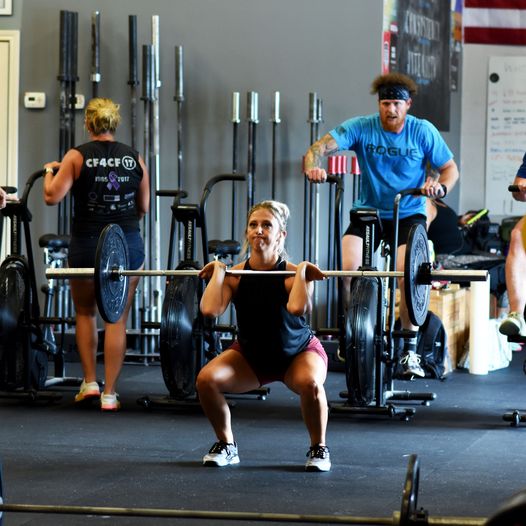
Unlocking Full-Body Strength: The Hammer Curl
When it comes to building strength, there’s no one-size-fits-all solution. Incorporating variety into your workout routine is crucial for maximizing your strength gains. Full-Body Strength Arm Exercise While classic bicep curls often dominate arm workouts, there’s another exercise that deserves the spotlight: the hammer curl. This dynamic movement not only enhances arm muscle development but also boosts overall body strength, stability, and functional resilience.
Understanding the Hammer Curl Of Full-Body Strength Arm Exercise
Hammer curls are a variation of traditional bicep curls, but they offer unique benefits. While both exercises primarily target the biceps brachii, commonly known as the biceps, hammer curls also engage two additional arm muscles: the brachialis and the brachioradialis. The brachialis, located beneath the biceps brachii, plays a crucial role in elbow stability, while the brachioradialis, found in the forearm, enhances grip strength.
What sets hammer curls apart is their distinct grip. Unlike traditional bicep curls that employ a palms-up grip, hammer curls utilize a neutral grip, with palms facing each other. This simple adjustment shifts the focus of the exercise, promoting a more comprehensive approach to strength development. Additionally, the neutral grip reduces strain on the wrists and elbows, minimizing the risk of overuse injuries, making this exercise particularly suitable for individuals with joint concerns.
Functional Benefits of Hammer Curls With Full-Body Strength Arm Exercise
Despite their less prominent reputation, hammer curls offer a wealth of benefits for everyone, not just fitness enthusiasts. Here are several compelling reasons to include hammer curls in your workout routine:
1. Enhanced Grip Strength
The neutral grip used in hammer curls significantly boosts forearm and grip strength. This increase in grip strength translates to improved performance in various exercises, enabling you to lift heavier weights and achieve greater overall strength gains.
2. Daily Activity Support Full-Body Strength Arm Exercise
Hammer curls build the arm and hand muscles essential for daily tasks, such as lifting, holding, and carrying. This exercise helps with everything from childcare to household chores and yard work.
3. Functional Independence for Older Adults Full-Body Strength Arm Exercise
For older adults striving to maintain functional independence, enhanced grip strength is vital. Hammer curls facilitate everyday tasks like opening jars, using tools, and completing household duties, making them particularly beneficial for this demographic.
4. Injury Prevention
The controlled motion and neutral grip of hammer curls strengthen the muscles and tendons around the elbow and wrist joints. This fortification reduces the risk of common injuries associated with weaker muscles and improper lifting techniques.
5. Joint Safety
With less wrist rotation required compared to traditional curls, hammer curls minimize injury risk, especially for individuals with prior wrist or elbow issues.
6. Core Engagement
Performing hammer curls correctly demands significant core engagement, which contributes to improved balance and overall strength.
7. Enhanced Muscle Visibility
For those seeking more visibly toned arms, hammer curls effectively build the brachialis muscle. This muscle lies beneath the primary biceps brachii, enhancing muscle visibility even when the arms are not flexed.
How to Perform Hammer Curls Full-Body Strength Arm Exercise
Editor’s Note: Before beginning any new exercise program, consult your doctor, especially if you have pre-existing conditions. If you experience pain, stop immediately.
To fully experience the benefits of hammer curls, focus on proper form and choose an appropriate weight for your fitness level. Use a weight that feels challenging but allows you to comfortably perform at least eight repetitions with good form. Remember to breathe correctly during the exercise—exhaling as you lift and inhaling as you lower. This breathing technique helps maintain core stability, ensuring correct form.
Step-by-Step Guide
- Starting Position: Stand with your feet shoulder-width apart, holding dumbbells at your sides with your palms facing inward in a neutral grip. Alternatively, you can perform the exercise seated, ensuring your torso leans slightly forward to allow the dumbbells to hang freely.
- Curl Movement: Exhale as you slowly curl both dumbbells up toward your shoulders, keeping your elbows close to your torso and your core engaged for stability. Pause slightly at the top of the movement.
- Lowering Phase: Inhale as you lower the dumbbells back to the starting position, maintaining control throughout the descent. Take your time, as the eccentric (lowering) phase is essential for muscle development.
- Repetitions: Aim for 8 to 12 repetitions with good form.
- Sets and Rest: Complete two to three sets, resting for at least one to two minutes between sets.
Optional Variation
If you prefer, you can perform one arm at a time, alternating right and left repetitions within each set to achieve a total of 16 to 24 reps (8 to 12 on each arm).
Common Mistakes to Avoid
To maintain proper form and minimize the risk of injury, be mindful of the following common mistakes:
- Using Momentum: Avoid swinging the dumbbells to lift them; instead, brace your core and rely on your arm strength.
- Flared Elbows: Keep your elbows close to your torso throughout the movement.
- Improper Weight Selection: Choose weights that are appropriate for your fitness level—neither too heavy nor too light.
- Skipping the Eccentric Phase: Don’t drop the weights too quickly; focus on controlling the descent.
- Neglecting Breathing: Maintain proper breathing and core stability throughout the exercise.
As you gain strength, gradually increase the weight of your dumbbells or the number of repetitions within the 8 to 12 range. If you find that increasing the weight requires you to decrease your reps to maintain good form, that’s perfectly acceptable, as long as you can still perform a minimum of eight reps correctly.
Incorporating Hammer Curls into Your Routine
To maximize the benefits of hammer curls, include them in your fitness program two to three times per week. They can be incorporated into both arm-specific and full-body workout days. You can alternate hammer curls with other bicep and tricep exercises for a comprehensive arm workout or include them in a circuit featuring a mix of upper and lower body exercises.
Conclusion
Hammer curls are more than just an alternative to traditional bicep curls. By integrating this exercise into your routine, you can significantly enhance your arm strength while improving your functional abilities for daily activities. Embrace the hammer curl to unlock your full-body strength potential and boost your overall fitness for years to come.





